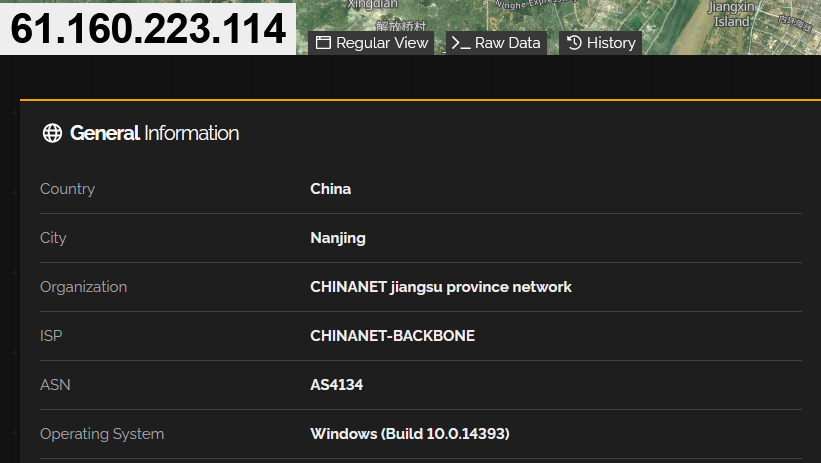Gh0st RAT
Gh0st RAT, a decades-old open-source remote administration tool (RAT), recently appeared in phishing campaigns targeting a healthcare organization. Gh0st Remote Administration Tool was created by a Chinese hacking group named C. Rufus Security Team that released it publicly in 2008. The public release of Gh0st RAT source code made it easy for threat actors to obtain and tailor the tool to their needs. Its feature set expanded over the years to include various surveillance, persistence, and information-stealing capabilities:
- Taking full control of the infected machine
- Recording keystrokes in real time with offline logging available
- Accessing live web cam feeds including microphone recording
- Downloading files remotely
- Remote shutdown and reboot
- Disabling user input
Over Gh0st RAT’s long life, Chinese nation-state threat actors have used it to breach high-value targets such as governments, embassies, economic targets, and media. One such breach was the operation known as “GhostNet” in 2009, in which a large-scale cyber-attack used Gh0st RAT to conduct surveillance and espionage. The breach impacted the Dalai Lama’s Tibetan exile centers in multiple countries.
Although Gh0st RAT was first identified in reports of threat activity almost 15 years ago, it is still actively distributed today. Cofense Intelligence identified an email targeting a European-owned medical technology organization located in China, attempting to deliver Gh0st RAT via an embedded link. The embedded link that hosted the malware was affiliated with Tencent and based in Hong Kong. The sample’s command and control (C2) server is also located on the CHINANET Jiangsu province network in the city of Nanjing.

Figure 1: A screenshot of the recent phishing email used to deliver Gh0st RAT via an embedded link.

Figure 2: A translation of the body of the recent Gh0st RAT campaign shows that it used an unpaid invoice as a theme.
Although Ghost RAT has a history of use by nation-state threat actors, Cofense Intelligence does not have conclusive evidence that this recent campaign is associated with known nation-state activity. The activity we observed activity shares certain characteristics with some advanced persistent threat (APT) groups, including APT27, which is known for intellectual property theft against healthcare and technology companies, and is also known for the use of Gh0st RAT. However, since Gh0st RAT’s source code is publicly available, it remains plausible that any threat actor could download and modify the code for their own needs. With Chinese universities (including more than one in Nanjing) being heavily involved in training talent for the Chinese defense industry, it is also plausible that students or other threat actors that are at times associated with APT groups may be carrying out independent threat activity using tools they are familiar with.

j
Figure 3: Details of the recent Gh0st RAT sample’s C2 server on the network information service Shodan.
| Indicators of Compromise |
| Files |
| 1680478346389.zip MD5: 9e6c45b6b8b20bf3c5959dbba8f27117 |
| LiveUpdate360.dat MD5: f149d3f3ef0361ebe4d346811f29b527 |
| LiveUpdate.exe MD5: 96e4b47a136910d6f588b40d872e7f9d |
| setting.ini MD5: 91aab4bbe634be62d11d132738c23a82 |
| SqlVersion9.dll MD5: 317f9ff06c076e87e5b1d11242396d5f |
| ú¿╡τ-╫╙-╖ó-╞▒ú⌐.exe MD5: 4723a2a8f68c1eaf82809cff29b8e56f |
| URLs |
| hxxps://api[.]youkesdt[.]asia/admin/down/hash/79b7c6ed-c4d8-4b36-b1cd-f968e6570010 |
| hxxp://datacache[.]cloudservicesdevc[.]tk/picturess/2023/SqlVersion9[.]dll |
| hxxp://datacache[.]cloudservicesdevc[.]tk/picturess/2023/Media[.]xml |
| hxxp://datacache[.]cloudservicesdevc[.]tk/picturess/2023/LiveUpdate360[.]dat |
| hxxp://datacache[.]cloudservicesdevc[.]tk/picturess/2023/LiveUpdate[.]exe |
| hxxp://datacache[.]cloudservicesdevc[.]tk/picturess/2023/223[.]114[.]txt |
| Command and Control |
| hxxp://61[.]160[.]223[.]114:18076 |
All third-party trademarks referenced by Cofense whether in logo form, name form or product form, or otherwise, remain the property of their respective holders, and use of these trademarks in no way indicates any relationship between Cofense and the holders of the trademarks. Any observations contained in this blog regarding circumvention of end point protections are based on observations at a point in time based on a specific set of system configurations. Subsequent updates or different configurations may be effective at stopping these or similar threats. Past performance is not indicative of future results.

Komentar
Posting Komentar